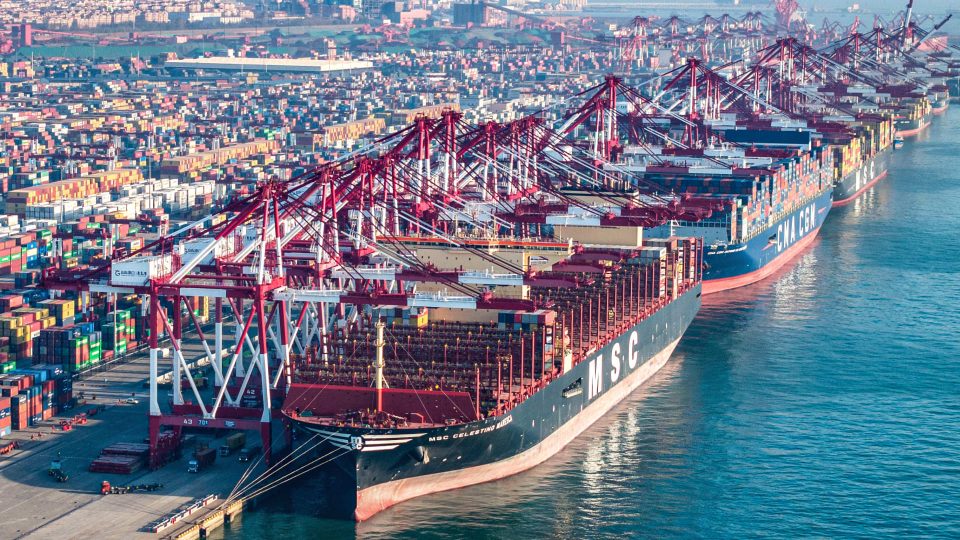The World Trade Organization (WTO) has issued a stark warning regarding the outlook for global trade in 2025, citing a significant decline driven by escalating tariffs and trade policy uncertainty. According to the WTO’s latest “Global Trade Outlook and Statistics” report, the volume of world merchandise trade is now projected to decrease by 0.2% this year, a sharp reversal from earlier optimistic forecasts. This decline is primarily attributed to the ongoing tariffs regime initiated by U.S. President Donald Trump, which has introduced substantial disruptions across international markets.
The WTO’s revised forecast reflects a notable deterioration from the previous expectation of modest growth, with the trade volume now expected to fall nearly three percentage points below what would have been anticipated under a low-tariff scenario. The report emphasizes that the current trade environment is marked by heightened uncertainty, with the potential for further declines if existing tariffs are reinstated or expanded. The WTO warns that such developments could deepen the downturn by an additional 1.5 percentage points, particularly impacting export-driven and least-developed nations.
Trade volumes in North America are forecasted to suffer the most, with exports expected to decline by 12.6% in 2025. This downturn is linked to the ongoing trade tensions between the U.S. and China, which have seen reciprocal tariffs exceeding 100% on certain imports. In early April, President Trump announced a temporary suspension of reciprocal tariffs for 90 days, aiming to facilitate trade negotiations, but the WTO cautions that the risk of reinstating full tariffs remains. If fully reinstated, these tariffs could reduce global trade growth by an additional 0.6 percentage points, compounding the overall decline.
Despite these challenges, some regions continue to contribute positively to global trade. Asia and Europe are expected to maintain growth, although at reduced levels. Asia’s contribution to global merchandise trade is projected to be 0.6%, while Europe’s contribution is similarly diminished. Conversely, North America’s impact is expected to subtract 1% from global merchandise growth, underscoring regional disparities driven by trade policy tensions.
Trade in commercial services is also expected to grow, but at a slower pace than previously forecasted. The WTO now anticipates a 4.0% increase in services trade in 2025, down from earlier projections of 5.1%. This slowdown reflects the broader global economic uncertainties and the ripple effects of trade tensions, which continue to hamper cross-border commerce.
The WTO’s projections are based on current policies, including the 90-day suspension of reciprocal tariffs. Should these tariffs be reinstated or expanded, the organization warns that the downturn could be more severe. The potential reinstatement of tariffs, especially on U.S. imports from China, could lead to a decrease in global trade volume by as much as 15%, the steepest decline since the COVID-19 pandemic in 2020.
The report also highlights the broader economic implications of these trade disruptions. While global GDP growth is expected to remain steady at 2.7% in 2025, the slowdown in trade could hinder overall economic recovery, especially in regions heavily reliant on exports. The WTO emphasizes that ongoing geopolitical tensions, regional conflicts, and policy uncertainties pose significant downside risks to the forecast.
The recent escalation of tariffs and trade tensions has already caused notable market volatility. In response, the U.S. has temporarily eased its stance, reducing tariffs on imports from certain trading partners by 10% for 90 days. However, the WTO warns that without a resolution, the trade environment could worsen, leading to deeper global economic repercussions.
The outlook for global trade in 2025 underscores the importance of stable and predictable trade policies. As the WTO’s projections suggest, the current trajectory could lead to a substantial slowdown, impacting economies worldwide. For investors and businesses, this environment signals the need for strategic planning and risk management to navigate the uncertain trade landscape.
The deteriorating trade outlook has implications for global markets, including companies listed on major exchanges. For instance, stocks of companies heavily dependent on exports or supply chains affected by tariffs could face increased volatility and downward pressure.
The WTO’s warning signals a challenging year ahead for global trade, with the potential for a steep decline in merchandise and services trade volumes. The ongoing tariff disputes, particularly between the U.S. and China, remain central to the outlook, emphasizing the need for diplomatic resolution and policy stability to foster a more resilient global trade environment.

